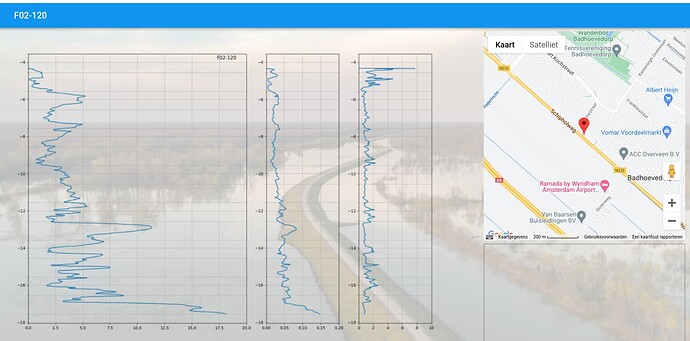I am working on a project for levee safety… I have already used multiple platforms like Qt / Flutter / Streamlit but now I have high hopes for LeveeLogic on Anvil because all my code for the logic of the app is in Python which makes it easier to use with Python based front end. No need to convert the logic to an API and call all stuff from Flutter… so yes, I hope this will be my final choice 
The app should allow users to store all the important data for levee calculations in one (cloud) place and it should make it easier to do levee safety assessments (it should even assess the levee safety with automated calculations in a later state). It will initially only be for me but I am think about making it a commercial project so I am grateful for the relatively cheap personal option.
The big challenge will be two things… one is connecting to Windows only software for calculations and the second is making it look nice because the material look is nice so far but in the end I want a personal touch to the app. But hey, I’ll work slowly towards a finished product (if ever  and until that time function is more important than looks!
and until that time function is more important than looks!
Here’s a screenshot of the project maintenance page
And another one with a dynamically generated plot of some project data… to be continued!
7 Likes
I have 3 VM on my company server room. The 3 servers run Windows only software and use an uplink connection waiting for tasks to do. When the app needs something, it adds a row to the queue table and calls an uplink function. The function runs in the uplink server, does the job, writes the progress on the same database row, so the app can poll that row every 2 seconds and sees the status of the task.
I have 3 uplink servers because those Windows software can only have one running instance per machine, because some of the tasks last a minute or two while some last hours, and because redundancy increases reliability. If your tasks are quick or they can run in parallel, then one machine could be enough
The biggest problem was that most Windows software need the user to be signed in, and Windows needs an user to enter the password to sign in, and if you create an user without password you open a door to all sorts of attacks. So our IT configured the machines so that they automatically sign in while keeping the risk to a minimum.
In order to
- run the Windows software we wrote,
- without forcing a user to log in to start it, and to
- restart automatically upon Windows reboot (Windows Update, I’m looking at you),
I’m looking at AlwaysUp. It launches and monitors the programs.
1 Like
I have looked into it (after you mentioned it here) and I liked it, but unfortunately it is not compatible with some of my software  .
.
But it is definitely something to keep in consideration.

 and until that time function is more important than looks!
and until that time function is more important than looks!

 .
.